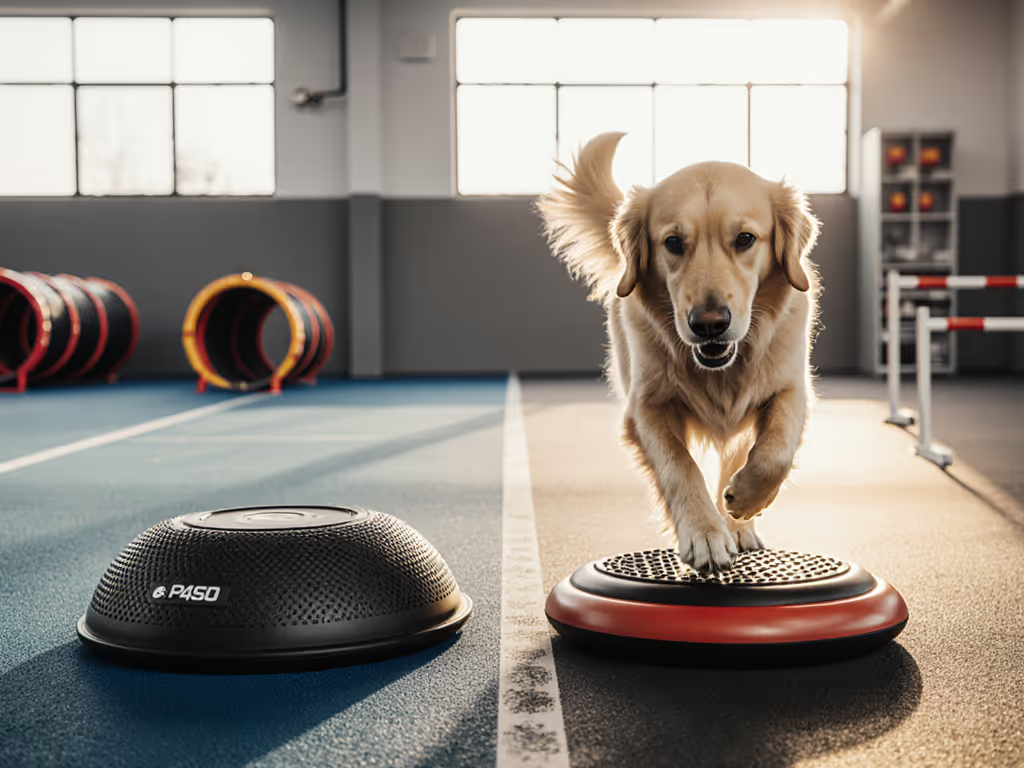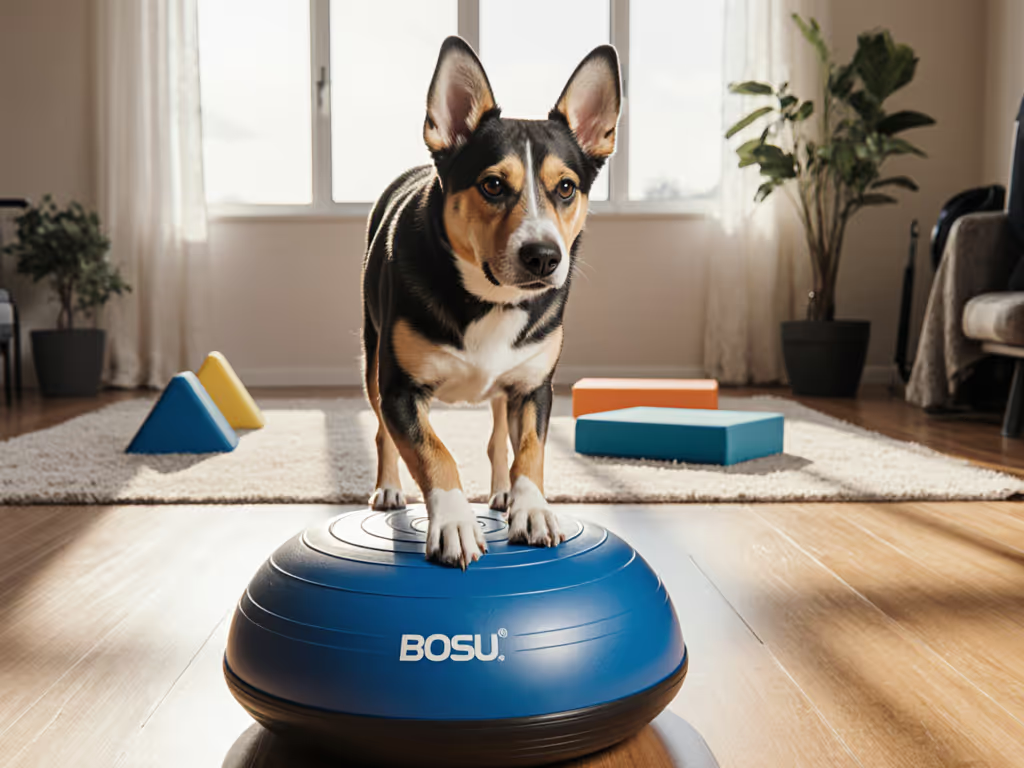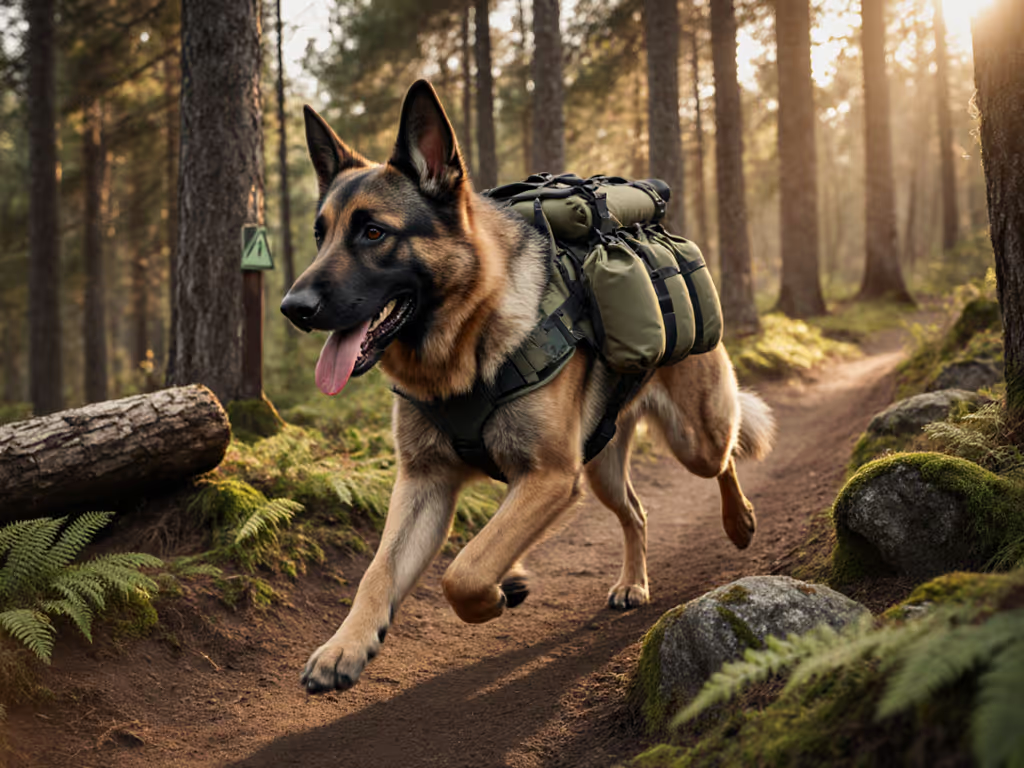
Canine Balance Training: BOSU Ball vs Balance Pads Guide

As a positive reinforcement trainer specializing in reactivity and leash skills, I've field-tested countless pieces of canine balance equipment through rain, mud, and the occasional squirrel distraction. The BOSU Ball vs balance pads debate is more than just a fitness fad, it is a critical canine balance equipment comparison for guardians seeking structured paths to confidence. When your dog pins behind you at a crosswalk, it's not just about the moment, it is about building the proprioceptive awareness that prevents those freeze responses from happening in the first place.
Today's market floods dog owners with gear promising miraculous results, often neglecting the fundamental principle I've built my methodology on: Fit first, then features, always powered by positive reinforcement. With more guardians seeking science-backed tools that genuinely support their dog's physical and emotional needs, understanding which balance surface aligns with your specific training goals becomes essential.
Why Balance Training Matters for Dogs
Balance training isn't just for canine athletes, it is foundational for any dog who needs to navigate unpredictable environments with confidence. For foundational principles and safe starting exercises, see our canine fitness basics guide. Proprioception (body awareness) directly impacts leash manners, reactivity thresholds, and overall mobility, especially for:
- Reactive dogs who lose stability when encountering triggers
- Senior dogs maintaining joint health For age-appropriate routines, see our senior dog fitness program.
- Growing puppies building coordination
- Dogs recovering from injuries
Unlike traditional obedience drills that focus solely on behavior, balance work strengthens the neuromuscular pathways that enable dogs to stay calm amid chaos. Research on unstable surface training (like that referenced in pediatric physical therapy studies) shows measurable improvements in dynamic stability, not just static poses. This translates to real-world benefits: a dog who can maintain balance while processing distractions is far less likely to react explosively.
Clear safety note: Never force your dog onto unstable surfaces. Start with stable platforms and gradually introduce instability only when they demonstrate confidence in simpler exercises.

BOSU Balance Ball Exercise Trainer
Breaking Down the Contenders: BOSU Ball vs Balance Pads
BOSU Ball for Canine Training: Features and Applications
Originally designed for human fitness, the BOSU Ball (Both Sides Up) has become a staple in canine conditioning. When used properly with the dome up, it creates a semi-stable surface that challenges your dog's stability in multiple planes.
Key Characteristics:
- Dual functionality: Dome up (compliant surface) or platform up (stable surface on unstable base)
- Material: Durable rubber construction (supports up to 350 lbs)
- Surface texture: Non-slip rubber top surface
- Height: 10 inches when fully inflated
- Portability: Requires inflation/deflation (less convenient for outdoor use)
The BOSU Ball excels when you need to:
- Challenge multi-directional stability (forward/backward/side-to-side)
- Progress from basic balance to more complex movement patterns
- Replicate real-world terrain variations (like walking on uneven surfaces)
Evidence-labeled claim: A study comparing trunk stabilization exercises on unstable surfaces showed significant improvements in balance metrics (p<0.004) when using equipment like the BOSU Ball compared to stable surfaces.
Balance Pads: Features and Applications
Balance pads fill a different niche in the canine fitness ecosystem. Made from closed-cell foam, they provide a more predictable instability than air-filled alternatives. If you're weighing foam pads against wobble discs, our balance pads vs discs comparison breaks down safety and use cases.
Key Characteristics:
- Material: Closed-cell foam (does not deflate)
- Surface texture: Flat, stable top surface
- Height options: Various thicknesses available
- Portability: Lightweight and needs no inflation
- Stackability: Can be layered to adjust height gradually
Balance pads work best when you need to:
- Provide predictable instability without sudden shifts
- Create a stable base for specific paw placements (ideal for dogs wary of movement)
- Build foundational balance skills before moving to more challenging equipment
- Work with dogs who have mobility limitations or are just beginning balance training
BOSU Ball vs Balance Pads: Strategic Comparison
Goal-to-Gear Mapping
Choosing between a BOSU Ball and balance pads isn't about which is "better" overall, it is about which matches your specific training objectives. Let's break down the best surface for canine balance based on common goals:
| Training Goal | BOSU Ball | Balance Pads | Recommendation |
|---|---|---|---|
| Foundational stability | Too advanced for beginners | ✅ Ideal for building initial confidence | Start with balance pads |
| Reactivity management | Moderate challenge (best after basics) | ✅ Excellent for decompression drills | Balance pads for early work |
| Agility skill development | ✅ Superior for dynamic movement | Good for static positions | BOSU Ball preferred |
| Rehabilitation | Use with caution (advanced stability) | ✅ Safer for controlled recovery | Balance pads first |
| Portability needs | Limited (requires inflation) | ✅ Highly portable | Balance pads win |
| Multi-dog households | Single unit (size limitation) | ✅ Multiple sizes easily stored | Balance pads for flexibility |
Safety Considerations and Limitations
Each option has important limitations to consider before purchase:
-
BOSU Ball limitations:
- Requires proper inflation (underinflation reduces stability)
- Slippery surface when wet
- Not ideal for dogs with significant mobility issues
- Risk of flipping if improperly positioned
- Less portable due to size when inflated
-
Balance pad limitations:
- Limited progression options compared to BOSU
- Less challenging for advanced dogs
- Foam can compress over time with heavy use
- No dual-sided functionality
Critical safety note: Never leave your dog unattended on balance equipment. Always supervise training sessions to prevent falls or injuries.
Practical Application: Time-Boxed Training Progressions
For Balance Pad Training: 3-Step Progression
These time-boxed steps build confidence safely while delivering measurable progress:
-
Foundation Building (5-7 days):
- Place balance pad on stable surface
- Goal: Four paws stationary for 3 seconds Choosing the right training treats will boost focus and reduce frustration in these early sessions.
- Cue-criteria-reward: "Settle" → paws fully on pad → high-value treat
- Session: 3x daily, 2 minutes each
-
Weight Shifting (7-10 days):
- Goal: Respond to food lure with controlled weight shifts
- Cue-criteria-reward: "Touch" → slight weight shift toward hand → reward
- Session: 2x daily, 3 minutes each
-
Integrated Practice (ongoing):
- Goal: Maintain balance while processing mild distractions
- Cue-criteria-reward: "Steady" → maintain position during handler movement → reward
- Session: 1x daily, 5 minutes during regular walks
For BOSU Ball Training: 3-Step Progression
Reward what you want to see. This isn't just a mantra, it is the operational principle that turns equipment into effective training. When your dog makes a micro-adjustment toward balance, that's the moment to reinforce.
-
Dome-Up Introduction (7-10 days):
- Place BOSU with dome up on non-slip surface
- Goal: Four paws stationary for 3 seconds
- Cue-criteria-reward: "Step" → complete paw placement → reward
- Safety: Position yourself to block potential slips
- Session: 2x daily, 3 minutes each
-
Controlled Movement (10-14 days):
- Goal: Respond to food lure with controlled weight shifts
- Cue-criteria-reward: "Lean" → controlled weight shift → reward
- Session: 1x daily, 4 minutes
-
Platform-Up Integration (for advanced dogs):
- Flip BOSU to platform-up orientation
- Goal: Maintain balance with handler movement around equipment
- Cue-criteria-reward: "Focus" → maintain position during movement → reward
- Critical safety note: Only attempt when dog has mastered dome-up work
Which Equipment Fits Your Real-World Needs?
The choice between BOSU training for dogs and balance pads ultimately comes down to your specific situation:
-
Choose balance pads if: You're working with a reactive dog, beginner, senior dog, or need portable equipment that requires no setup. They're the ideal balance pad alternatives when you need predictable, incremental progress.
-
Choose the BOSU Ball if: You're preparing for dog agility training tools, have a physically sound dog ready for advanced challenges, and want equipment that grows with your dog's skill level. Planning a small-space setup? Explore home agility equipment for safe progression.
Remember that the most expensive or trendiest equipment won't deliver results if it doesn't match your dog's current abilities and your shared goals. That rainy weeknight when I saw my foster dog transform? It wasn't just the gear, it was matching the right equipment to the right drills that made the difference.
Actionable Next Step
Start with your end goal in mind, then work backward to select equipment that serves that purpose. For most guardians addressing reactivity or basic leash manners, begin with balance pads to build foundational stability before progressing to more challenging equipment like the BOSU Ball.
Your immediate action: Spend 5 minutes observing your dog's current balance abilities on stable surfaces. Can they stand still while you move around them? Do they shift weight comfortably between paws? Document these baseline observations, they will guide your equipment choice and training progression.
When you understand that balance isn't just physical but deeply connected to emotional regulation, you'll see why choosing the right surface matters. Whether you're working toward calm sidewalk walks or competitive agility, building stability from the ground up creates results that last, because the most effective training always starts with where your dog actually is, not where we wish they were.



